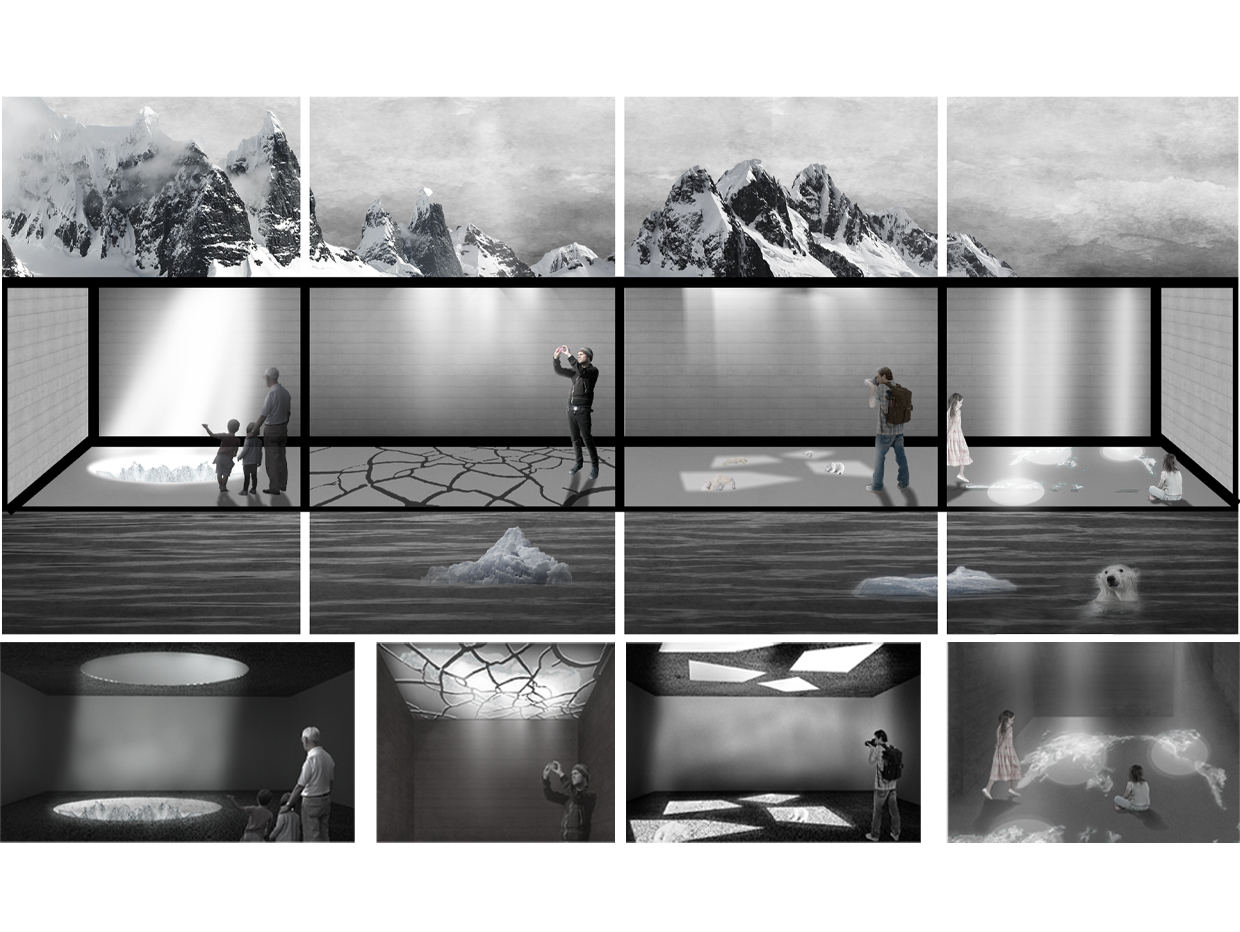Light from the glacier

Category
Daylight in buildings - Region 4: Asia and Oceania
Students
Xinyu Wang
Weiqi Zhang
Ruoyang Ge
Runmin Su
Teacher
Huang Xuan
School
Southwest Jiaotong University
Country
China
Download
Download ↓
Design background:1.What is a glacier?Glacier Definition: A natural ice body that exists for many years on the surface of polar or alpine regions and has a state of movement along the ground. Glaciers have accumulated snow for many years and are formed by ice formation such as compaction, recrystallization, and refreezing. It has a certain shape and layer, and has plasticity. Under gravity and pressure, it produces plastic flow and block sliding, and is an important freshwater resource on the surface. The International Glacier Catalogue stipulates that all perennial snowdrifts and ice bodies with an area of more than 0.1 square kilometers should be included in the Glacier Catalogue. 2.Glacier Melting Status: An average of 267 billion tons of ice has melted into water each year over the past 20 years. Glaciers have melted faster in recent years, losing an average of 31 percent more snow and ice each year than they did 15 years ago. Compared with 2000-2004, 71 billion tons more ice and snow will be melted each year between 2015 and 2021. Since 2015, about 220,000 mountain glaciers in the world have lost an average of more than 298 billion tons of ice and snow every year.3.The reason for the melting of glaciers: Due to the continuous deforestation of human beings and the burning of fossil energy such as oil and coal, the earth has produced carbon dioxide and other greenhouse gases that exceed its self-net load. These greenhouse gases are highly permeable to visible light from solar radiation, but are highly absorbing to long-wave radiation emitted by the earth, and can strongly absorb infrared rays from ground radiation, thereby causing the earth’s temperature to rise and the greenhouse effect to intensify. Under the influence of global warming, glaciers have been melting at an extremely fast rate in recent years. Design description:The design consists of four units. The first unit shows people that the glacier was once continuous, the second unit shows people that the glacier melted and split, the third unit shows people the impact of the glacier on animals, such as making the polar bear lose its habitat and enough food, and the fourth unit shows people that if the glaciers all melt, the earth’s sea level will rise by more than 15 inches, This will lead to large-scale floods and shortage of fresh water in coastal areas, which will cause great disasters to human beings. When people finish watching the scene in unit 4, they can look back through the glass to see the scene of continuous glaciers in unit 1, so as to tell people that if each of us is willing to make some changes, glaciers will always exist and the earth will always be beautiful.This design aims to show the past state, present state and possible future shape of glaciers on the earth through light, so that people can pass through this space, experience the impact of glacier change on the earth, animals and human beings, and tell people that their actions may affect glaciers thousands of miles away, thus affecting their lives again. This is to tell people to travel with low carbon in daily life, save electricity and reduce waste disposal, so as to reduce the generation of greenhouse gases, slow down the rate of glacier melting and make the earth’s ecology more stable.

































